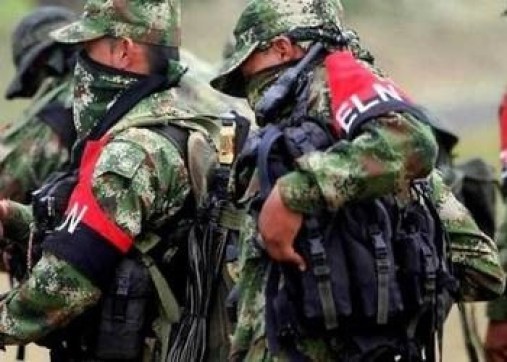
A new alliance between two of Colombia’s main criminal groups is seeking to contest ELN control of lucrative criminal economies along the border with Venezuela.
By Juan Diego Posada/ InSightcrime
In mid-January, gun battles forced a dozen families to flee from the rural area of Tibú, a municipality in the northeastern department of Norte de Santander on the Colombia-Venezuela border, according to Caracol Radio. The war was between the National Liberation Army (Ejército de Liberación Nacional – ELN) and two irregular armed groups, the Rastrojos and the Urabeños.
Human rights organization Fundación Progresar reported in December that an incursion by the Urabeños, also known as Clan del Golfo (Gulf Clan), into the region had forced more than 80 families to flee.
The Urabeños are a new player in a protracted two-year fight for the border between the ELN and the Rastrojos. Though the Rastrojos had long controlled drug trafficking, human trafficking and contraband between the two countries, the superior strength of the ELN, as well as backing by the Venezuelan government, put Los Rastrojos on the back foot, with members regularly killed or arrested.
According to an expert who has studied the criminal landscape in Norte de Santander but asked to remain anonymous, Los Rastrojos have turned to the Urabeños to regain control of trails across the border. The source told InSight Crime that the Rastrojos are down to some 80 men, so they turned to the Urabeños, who have also suffered losses to the ELN.
InSight Crime Analysis
Once deadly rivals, the Urabeños and the Rastrojos have been brought together by the ELN’s seemingly inexorable rise in Colombia and Venezuela. This determination to not give up ground also reinforces that the remote border trails are some of Latin America’s most lucrative criminal real estate.
Once the realm of various competing groups, including the Popular Liberation Army (Ejército Popular de Liberación – EPL), Los Pelusos and the Revolutionary Armed Forces of Colombia (Fuerzas Armadas Revolucionarias de Colombia – FARC), the ELN has come to dominate these trails since the FARC’s demobilization in 2016.
The tacit support of the Venezuelan government has only comforted the ELN’s position. And last year, the ELN appeared to move more fighters from inside Colombia to the border region, many from the Carlos Germán Velasco Villamizar Front in Cúcuta, under the leadership of alias “Julián” or “Rolo,” a Colombian army source told La Opinion.
It is still uncertain how solid the Urabeños-Rastrojos alliance is, but it makes sense for both groups. The Rastrojos are in dire need of support and the Urabeños have rarely refused favorable alliances, extending their criminal sway through a system of “franchises” across Colombia.
The recent capture of Urabeños members near the border has only reinforced the notion that the group seeks to bolster its presence in Norte de Santander.
It also remains to be seen if this alliance can make a meaningful difference to the rise of the ELN, one of the most severe threats to national security in the region. If so, this conflict could spread to include other major criminal groups operating near the border, such as the ex-FARC Mafia.